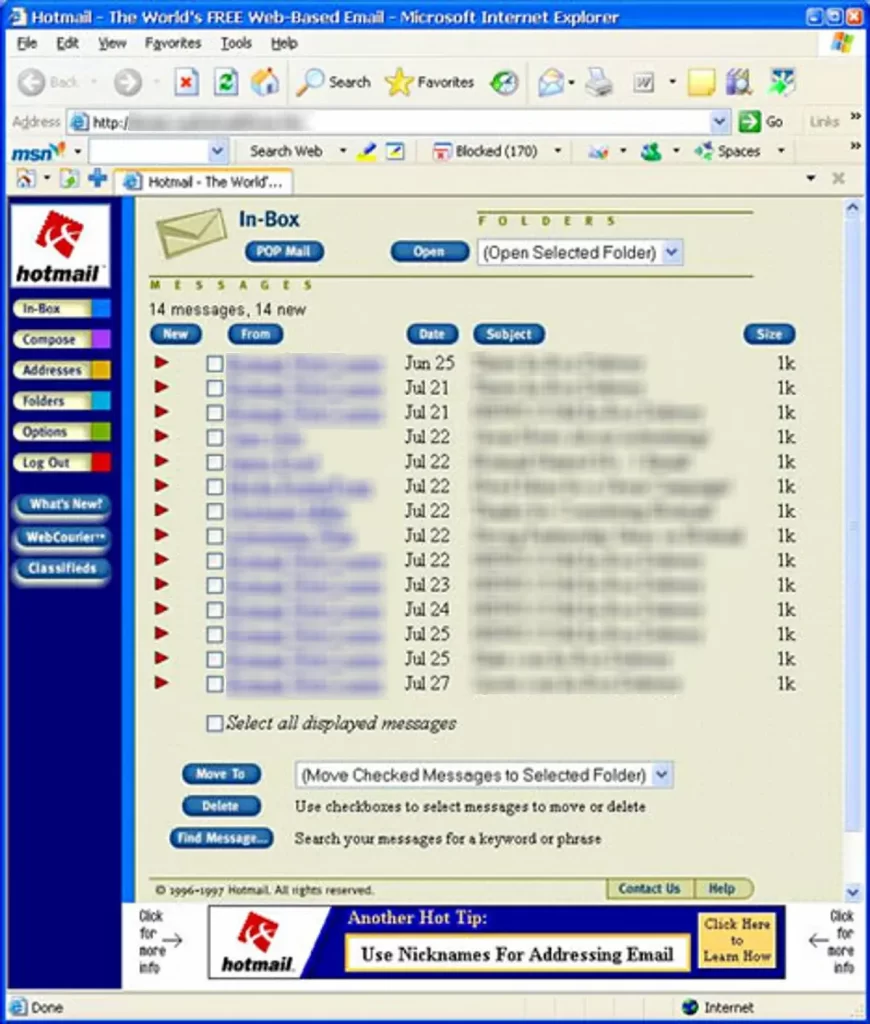Way before we all moved to Gmail, there was Hotmail, the first free web-based email service. And way before Microsoft acquired them, and on a limited budget, they were looking for ways to grow. This growth hack teaches us how it’s not always necessary to have a large budget or make significant investments in infrastructure.
The Growth Hack
- Hotmail is a free service
- Anyone can have an account
- It’s friendlier than other existing providers.
The Results
This message doubled their user base from 500,000 to 1 million in just six months. But, that was just the beginning, as five weeks later, they exploded and reached over 2 million users. Eventually, Hotmail reached 12 million users within 1.5 years of launching this strategy.
Remember that it’s not always about money and significant investments. This PLG (Product Led Growth) approach got Hotmail way better results than expected, and today such an approach is used in many products. Think about when you share something from different apps, such as your fitness app, and how they always push their branding as part of the shared content.





